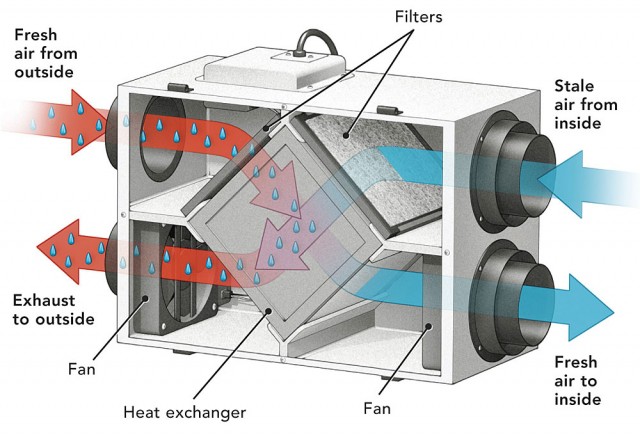Exploring the Advantages of Heat Recovery Ventilation for Energy Performance in Homes
Heat Recovery Ventilation (HRV) systems supply property owners a useful strategy to boosting power effectiveness. By redeeming heat from outgoing air, these systems can substantially decrease cooling and heating prices. Additionally, they give a constant supply of fresh air, improving interior air high quality and comfort levels. As property owners consider sustainable alternatives, understanding the subtleties of HRV systems ends up being increasingly vital. What factors should one examine before making such a financial investment?
Understanding Heat Recovery Ventilation Equipments

Just How HRV Boosts Indoor Air High Quality

Energy Cost Savings: The Monetary Benefits of HRV
Taking full advantage of energy performance, heat recovery ventilation (HRV) systems offer significant economic advantages for home owners. By recovering and recycling warm from exhaust air, HRVs substantially reduce heating and air conditioning prices. This technology can result in energy savings of up to 30%, depending on environment and this link use patterns. House owners commonly observe reduced energy bills soon after installation, making HRVs a monetarily sensible financial investment with time. Furthermore, numerous regions provide motivations or refunds for energy-efficient upgrades, better improving the economic allure. As power prices proceed to rise, the cost-effectiveness of HRVs ends up being significantly clear. Generally, the consolidation of HRV systems not only promotes energy efficiency however likewise adds to lasting monetary savings for families.
The Environmental Impact of Heat Recovery Ventilation
A substantial environmental benefit of heat recovery ventilation (HRV) systems lies in their capacity to minimize general power usage. By reclaiming warmth from exhaust air and moving it to inbound fresh air, HRV systems decrease the requirement for energy-intensive home heating and cooling approaches. This decrease in energy need adds to decrease greenhouse gas exhausts, as much less nonrenewable fuel source is called for to preserve comfortable indoor temperatures. In addition, HRV systems improve indoor air top quality by effectively check these guys out trading stagnant air with fresh outdoor air, reducing reliance on mechanical cooling systems that can harm the environment. In general, the execution of HRV systems supports lasting living techniques and straightens with global initiatives to combat environment change by advertising power performance in household settings.
Selecting the Right HRV System for Your Home
Just how can home owners ensure they select the right heat recovery ventilation (HRV) system for their requirements? First, they ought to evaluate their home's dimension and format, as these factors influence airflow needs. Next, evaluating the system's performance ratings is important, as greater ratings show better performance and energy financial savings. House owners must also consider installation and maintenance costs, comparing various brand names and models for worth. In addition, it is necessary to assess sound degrees, as some systems operate even more quietly than others. Consulting with a/c professionals can provide tailored suggestions based upon specific home conditions. Checking out individual testimonials and service warranties can aid in making a notified choice, making certain that the selected HRV system successfully enhances indoor air quality and energy effectiveness.
Regularly Asked Inquiries

How Usually Should I Clean or Preserve My HRV System?
The regularity of cleaning or maintaining a warm healing ventilation (HRV) system usually depends on use and ecological elements. Usually, it is suggested to execute upkeep every six months to assure peak efficiency and air quality.

Can HRV Solutions Help In Reducing Moisture Levels Inside?
HRV systems can efficiently decrease indoor humidity levels by exchanging stagnant, damp air with fresh, drier air from outdoors. HRV Heat Find Out More Recovery Ventilation. This procedure aids maintain a balanced indoor setting, improving comfort and stopping moisture-related concerns
What Is the Life-span of a Regular HRV System?
The life-span of a normal heat recovery ventilation (HRV) system differs, usually lasting in between 10 to 15 years. Normal upkeep can expand its effectiveness and operational life, ensuring peak performance throughout its usage period.
Are There Any Sound Worry About HRV Solutions?
Noise worry about HRV systems can emerge, specifically from fan procedure. Nonetheless, several contemporary units are created to decrease audio degrees, guaranteeing they run silently while preserving performance, which resolves possible disruptions in living atmospheres.
Can I Install an HRV System Myself, or Do I Need a Professional?
The private contemplated whether to set up the heat recovery ventilation (HRV) system personally or work with a specialist. Usually, while do it yourself setup is feasible, competence guarantees appropriate capability and conformity with neighborhood building codes, improving system effectiveness.